If you have a solid inbound strategy in place, you know all about marketing automation, SEO, and writing engaging content. But if you are like most B2B marketers, you may have a sneaking suspicion that your inbound marketing strategy isn't enough.
Sure, inbound brings in leads. But those are only the people that are finding you. A broader approach is needed if you want to reach your growth goals and attract leads from your total addressable market. Inbound alone won't cut it.
What's the solution? It's time to add an outbound marketing strategy to your toolbox. More businesses are using outbound marketing to proactively build a larger audience and nurture potential buyers into sales-ready leads.
In this post, we answer the most frequently asked questions about outbound marketing. Then, we share tips about how you can apply them to the top of your sales funnel to find and convert more leads.
Outbound marketing is a methodology based on direct outreach to your addressable market. Similar to inbound, its objective is to engage leads and convert them into sales opportunities. Examples of outbound marketing include email and phone outreach.
Outbound marketing does two things. First, it helps you identify your total addressable market (TAM). Your TAM consists of all the companies that meet your ideal client profile and the title roles within those companies that are the likely decision-makers for your product or service. Second, it improves your lead nurturing process by making sure you are talking to leads at the right time, with personalized messaging that moves them further down the funnel.
If you are still aimlessly cold-calling and mass emailing, the answer is yes. However, a strong outbound marketing strategy involves strategic outreach that leverages content and gets your message in front of potential buyers and multiple touch points to nurture them through the top of the sales funnel. This strategic approach to outbound is far from dead and an important component of your sales toolkit.
An outbound component to your marketing strategy is essential because it helps you proactively identify high-quality leads, build relationships through meaningful engagement and identify pain points.
It's essential you take a strategic approach and not just "smile and dial" and send spammy emails. By applying a strategic approach, you will build trust, which will increase the quality of your interactions.
At a high level, an outbound marketing strategy starts with audience development to define and identify your ideal audience. Then, through market research, outbound uncovers the decision-makers who are most likely to need your product or service, building out a list of ideal contacts. With this list, the next stage of outbound kicks off with personalized phone and email outreach.
Talking directly to decision-makers reveals whether a lead is qualified for your service or product. If they are not ready to buy, they can be added to ongoing marketing campaigns (think inbound lead nurturing).
If a qualified lead continues to react to your content and messaging, it's time to conduct outbound outreach again to move them deeper down the funnel. Conducting personalized follow up with these reactors continues to build relationships with prospects and makes it clear when they're ready to talk to sales.
The secret to a successful outbound marketing strategy is incorporating a human touch. Converting leads to a sales meeting takes consistent contact. We call these touchpoints, and it requires more than most teams realize.
On average, it takes more than nine touchpoints for an incoming web lead to convert to a sales meeting.
Yes, that's significant. Even when a C-level decision-maker fills out a form on your website, it still takes at least nine touchpoints to get them to book a meeting.
Many of these inbound leads are often neglected since sales teams focus on prospects that are quicker to convert. Research shows that the average salesperson only makes two attempts to reach prospects generated from inbound efforts. That's a far cry from the nine touchpoints required to move most leads to a meeting.
A Strategic Outbound approach helps you reach the right decision-makers, gather intel, and then use that knowledge to build personalized messaging that speaks to their specific needs and pain points. Pushing out mass email content lacks personalization. With outbound, you build relationships and generate enough touchpoints to develop qualified leads that drive toward a better ROI.
Outbound marketing works best when applied at two specific points in your lead funnel, the top and middle.
At the top of the funnel, outbound outreach helps you proactively find your ideal buyers.
At the middle of the funnel, outbound outreach builds engagement that moves leads farther through the lead funnel and into the sales pipeline faster.
Outbound marketing begins at the top of the lead funnel with audience development. Audience development is about finding the right decision-makers at target accounts so you can start personalized outreach.
Say you start with a prospect list of 3,000 contacts from your database. Through outbound outreach, you begin contacting this list to verify that these leads are who you want to talk to. You don't want to spend time on people who don't have conversion potential.
By calling directly, you filter your list to only those right for your message. Often, marketers reach out to a contact because they have a certain job title. But job title alone isn't always the best indicator of the true decision-makers at a company. A person's role and purchasing power at one company could be drastically different than at another, even if they are in the same position.
Outbound gets people on the phone to have a discussion. If that contact isn't the right fit, you can ask for a referral. Through personal outreach, you uncover information about your leads to reliably find the right decision-makers. Unfortunately, there's so much noise in the marketplace that relying on inbound alone means important information gets lost.
Going straight to the source through outbound marketing is also important because, as we know, turnover happens. On average, 20% of any list of executive-level contacts at mid-to-enterprise-sized companies is likely to be inaccurate within a year. So your audience list has to be refreshed regularly to keep contact information current.
Having live conversations with people at a company helps you identify new names and roles in the organization. With this knowledge, you can build relationships with decision-makers and create a personalized message that makes all the difference in converting to sales.
Outbound lets you navigate an organization effectively and efficiently to find the right people and shape the right message for their roles.
Your message will be different if you're trying to reach someone in IT versus an investment or risk officer. They may both be interested in what your company offers, but for different reasons. For example, IT will be interested in learning how your solution can keep company data more secure. A compliance officer, on the other hand, may be concerned about how it fulfills regulatory requirements. Knowing who you're talking to allows you to focus on specific pain points and explain how your product or service is the best solution for their challenges.
Outbound lets you take charge, bring new buyers into your audience, and expose them to your message. Instead of playing the waiting game, you're actively pulling in new prospects. Top of funnel outbound is a continuous process that ensures you're talking to the right people to bring in more qualified leads.
Your outbound marketing strategy has started sending people to your content and they're becoming familiar with who you are and what your company has to offer.
What now? Mid funnel is where outbound marketing shines.
If you're executing outbound strategically, you are focused on the right people in your target market. You're not cold calling. These are educated buyers who are much more likely to convert.
Here's an example of how outbound marketing adds another layer of engagement and exposure. A client we worked with for years began to see a significant decline in response rates and booked sales meetings. They turned to MarketLauncher for help.
What could we do to reverse this trend? Our strategy was to move away from cold calling and instead use our client's existing content strategy to increase touchpoints and build engagement.
Consistent content outreach turned cold leads into warm leads, and educated buyers ready to hear from our team. At this point, we began personalized outbound calling to get a dialogue going and incorporating the human factor in moving leads forward.
This strategic approach brought significant results. We more than tripled our client's previous number of sales opportunities -- 70% of leads advanced to the sales funnel versus 40% in their previous approach. And we were able to do all of this without increasing their budget because we were using the same volume of outreach, just redirected at a more precise target audience with higher likelihood to convert.
Direct outreach at mid funnel also uncovers great market intelligence. As you move a lead through the funnel, all the intel you're gathering allows for further nurturing that's relevant and personalized.
Getting to a lead too early in the pipeline won't deliver the results you need. Use outbound to engage mid funnel prospects who have already reacted to your content. You'll be well on your way to realizing the full value of your marketing efforts.
We helped one of our clients develop an outbound marketing strategy to reach their ideal audience and book more sales meetings. Our client thought they knew what their ideal customer looked like. We discovered that the contacts in their database didn't match that ideal customer. As a result, we were reaching out to people who didn't match their target audience and were seeing fewer sales meetings because of it.
Through outbound marketing, we identified the right decision-makers at the correct target companies. As we talked with prospects directly, we found that while many of them were interested in our client's product, they didn't have the minimum number of users required to make the solution worthwhile. We could talk to them all we wanted, but even the best marketing and sales pitches would never convert them to a viable sales opportunity.
As we continued to engage, we found that budget was a good indicator of whether a company would be interested in our client's solution. We then filtered our contact list based on annual revenue. This allowed us to focus our outreach efforts on companies that met our new audience requirements.
Being strategic and targeted in our approach led to more leads moving down the sales pipeline. Outbound marketing gave us the intel needed to find the right contacts for our client. And it gave us the tools to go after the right decision-makers.
A lot of companies lack the resources they need to develop an outbound marketing strategy. It's a lengthy, time-consuming process. Internal marketing and sales teams often don't have the bandwidth to take on the focused work that outbound requires. And it’s probably not the best use of your sales team's time. They should be focused on closing deals.
We've been helping companies grow efficiently and close more sales deals for over 20 years. To us, it's all about strategy. Starting at the top with audience development, we research your total addressable market to find the decision-makers who are right for you. We develop prospect lists and continually update contact information through targeted outbound.
Then we move those mid funnel leads forward in the sales pipeline with our appointment setting services. Our team conducts direct phone and email follow up to reach prospects who are already familiar with your message. Our sales development specialists collect intel and pre-qualify leads based on specific criteria. The end result? More booked sales meetings with leads that are most likely to close.
Want your company to grow and close more sales deals? Convinced outbound marketing has a place in your overall strategy? Let's set up a time to chat if you're interested in learning more.




